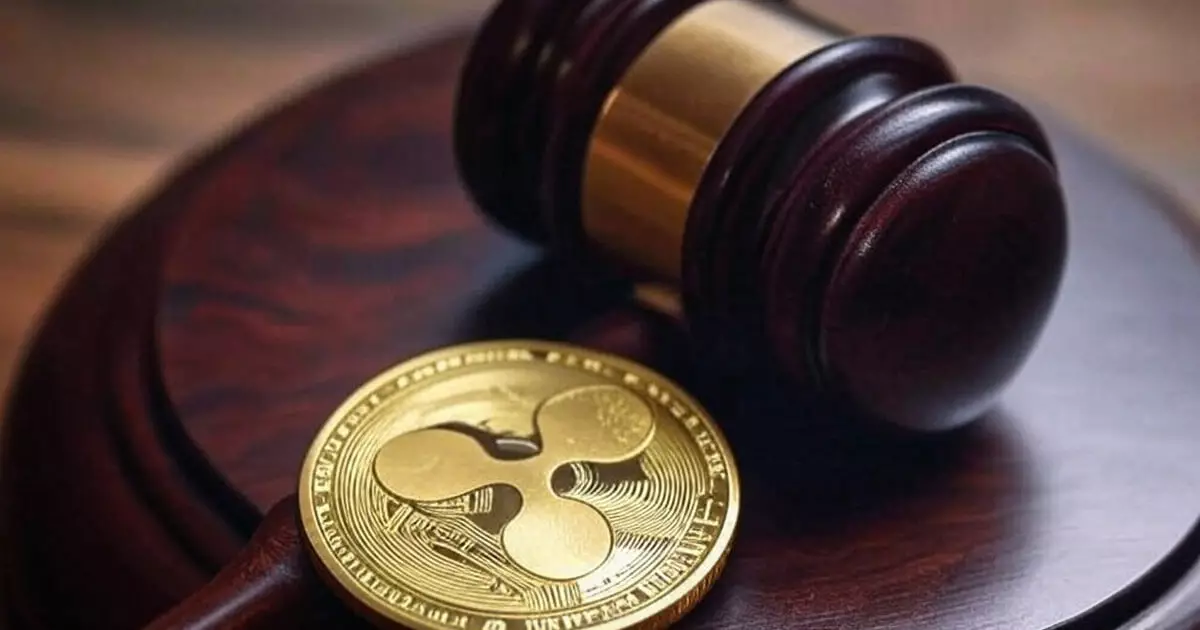The recent joint filing by the U.S. Securities and Exchange Commission (SEC) and Ripple Labs is not merely a conclusion to an intense, protracted legal battle; it’s a defining moment for the cryptocurrency industry. With the SEC proposing a settlement to drop its longstanding civil enforcement action against Ripple and its key executives, there’s a palpable shift in tones when it comes to regulatory practices in the digital currency space. This event raises not just eyebrows, but crucial discussions about what this means for the industry’s future.
Regulatory clarity has been a long-desired yet elusive goal for many within the crypto sector. Traditionally viewed with skepticism, cryptocurrencies have often found themselves mired in regulatory ambiguity. The SEC’s move to propose a settlement, despite its history of aggressive posturing, signals that the regulatory environment might be softening, suggesting that perhaps a pragmatic approach to crypto regulations is finally on the horizon.
The Financial Ramifications for Ripple and Beyond
One essential aspect of this proposed settlement is its financial implications. Ripple is looking to pay a $50 million civil penalty while regaining a substantial $75 million from an escrow account. At first glance, this appears to be a manageable price for Ripple to pay for their prolonged legal woes. Yet, the broader implications extend far beyond the balance sheet of one company.
This substantial financial engagement might set a precedent for how other crypto firms view their regulatory risks versus their operational freedoms. In an industry often rife with uncertainty, this offer from the SEC could inspire other companies to adopt compliance measures that balance innovation with legal safeguards. The question now looms: Will this encourage more firms to bring their operations under the vigilant eye of regulators rather than forcing them into the shadows?
The Unfolding Legal Dynamics
The intricacies of the legal battle deserve careful scrutiny. While Ripple’s agreement to pay a civil penalty suggests a desire to move forward, it does not necessarily indicate any admission of guilt related to the fundamental allegations made by the SEC. This critical point must not be overlooked. The jury is still out regarding the merits of the SEC’s claims that Ripple’s XRP sales amounted to unregistered securities offerings, a classification many argue stifles innovation.
This nuance raises questions regarding the effectiveness of the proposed settlement. While it appears to offer closure, the SEC has carefully stipulated that the settlement should not set a legal precedent—an interesting contradiction for an agency that often seeks to solidify its regulatory stance through decisive actions. Will this press for previous claims against Ripple resonate or fade as a curious footnote in crypto history?
What Lies Ahead for Cryptocurrency Regulation?
Another captivating dimension of this settlement is its potential ripple effect—pun intended—on the overarching regulatory landscape. The SEC has consistently straddled the fine line between enforcement and innovation stimulation. Now, with Ripple’s case seemingly paving a new path to regulation, how might other regulatory bodies approach cryptocurrencies?
Although the SEC has not directly indicated a sweeping regulatory overhaul, a successful resolution might empower both state and federal regulators to consider a more collaborative approach in developing frameworks that foster innovation while ensuring investor protection. Given the rise of decentralized finance (DeFi) platforms and Initial Coin Offerings (ICOs), regulatory bodies need to embrace additional scrutiny over these new modalities while not stifling the creativity that fuels the crypto market.
The Community’s Response: A Divided Landscape
Public sentiment within the crypto community is far from uniform. While some hail the proposed settlement as a beacon of hope, others express skepticism, citing a lack of genuine engagement from regulatory bodies during the consultation phases. The ongoing wariness reflects a broader sentiment that regulatory agencies may ultimately prioritize control over cultivating an environment conducive to technological advancements.
This divide highlights a critical challenge for all involved: bridging the gap between necessary oversight and unwarranted overreach. The crypto industry thrives on innovation and decentralized principles, which could clash with stringent regulatory frameworks if not carefully balanced. Stakeholders need to proactively engage with oversight bodies to mitigate the risks of heavy-handedness in regulation.
Through this tumultuous discourse, Ripple’s attempted resolution, emerging as a beacon amid the tumultuous waves of crypto regulations, urges all sides to level with one another. It emphasizes that effective regulation is not an enemy of innovation but a necessary partner that can pave the way for a sustainable digital economy.

